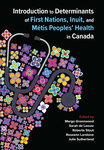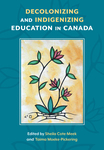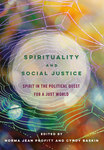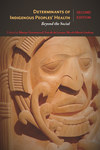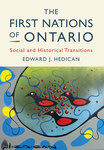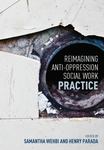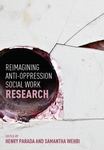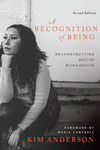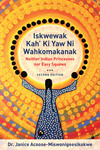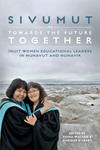We don’t actively support Internet Explorer
It appears that you are using Internet Explorer, which has been discontinued by Microsoft. Support has ended for versions older than 11, and as a result you may face security issues and other problems when using it.
We recommend upgrading to a newer browser such as Firefox, Google Chrome, or Edge for a much better experience across the web.
While this site may work with Explorer, we are not testing and verifying it, so you may run into some trouble or strange looking things.
Strong Helpers' Teachings, Second Edition
The Value of Indigenous Knowledges in the Helping Professions
By Cyndy Baskin
Overview
Timely and accessible, Strong Helpers’ Teachings skillfully illustrates the importance of Indigenous knowledges for students, practitioners, and scholars in the human services. Making space for the voices of many Indigenous and non-Indigenous scholars, practitioners, and service users, Cyndy Baskin’s text models possible pathways towards relationship building and allyship. Placing Indigenous concerns and perspectives at the centre of social work disciplines, and through the use of examples and case studies, Baskin covers topics such as spirituality, research, justice, and healing.
This thoroughly updated edition includes new chapters on self-care for helpers, holistic approaches to mental health, and two-spirit experiences and is a valuable resource for those interested in sharing, listening, and teaching Indigenous worldviews and helping practices.
Table of Contents
Author Biography
Acknowledgements
CHAPTER ONE: STARTING AT THE BEGINNING
Mi’kmaq Welcome
Introduction
Who Are Indigenous Peoples?
Overview of the History of Colonization
The Role of Social Work in Colonization
Fears of Appropriation
Who Is This Book For?
What This Book Is and Is Not About
Indigenous Approaches Can Enrich the Helping Professions
Conclusion
References
CHAPTER TWO: THE SELF IS ALWAYS FIRST IN THE CIRCLE
Introduction
Let’s Begin with Me
Self-Reflexivity
Help for the Helpers/Self-Care
Protection from Isolation
Turning Anger into Activist Power
Conclusion
References
CHAPTER THREE: WHEN BAD THINGS HAPPEN TO THOSE WHO DO THE HELPING
Introduction
Terra (Part One)
Suicide Is Not a Private Act
Those You Think Will Understand
The Journalists
Terra (Part Two)
Views on Suicide
Community Support
What Helps
Prevention through Relationships
Conclusion
References
CHAPTER FOUR: CURRENT THEORIES AND MODELS OF SOCIAL WORK AS SEEN THROUGH AN INDIGENOUS LENS
Introduction
Anti-oppressive and Structural Social Work Theories
Postmodernism
Post-colonial Theory
Cultural Competency Models
Cultural Safety
Indigenous Worldviews Guide Approaches to Helping
Conclusion
References
CHAPTER FIVE: CENTRING ALL HELPING APPROACHES
Introduction
Being Secure in Who You Are
Sameness or Acceptance of Difference?
Challenges to Incorporating Indigenous Approaches
Conclusion
References
CHAPTER SIX: FROM AN ETHICAL PLACE
Introduction
Framework for Writing about Values and Ethics
From an Ethical Place
Moving Away from Individualism
Relationships
Learning
Seven Sacred Teachings
Conclusion
References
CHAPTER SEVEN: HOLISTIC OR WHOLISTIC APPROACH
Introduction
The Person
The Family and Community
All of Creation
Ever-Changing
Conclusion
References
CHAPTER EIGHT: THE ANSWERS ARE IN THE COMMUNITY
Introduction
Why Community First?
People Know What Is Needed
What’s Missing?
Wealth of Resources
Helpers as Warriors
Conclusion
References
CHAPTER NINE: SPIRITUALITY: THE CORE OF INDIGENOUS WORLDVIEWS
Introduction
How Is Spirituality Defined?
Land-Based Spirituality
Where Are We Heading?
Assessing Spirituality
Conclusion
References
CHAPTER TEN: MENTAL HEALTH AS CONNECTED TO THE WHOLE
Introduction
Definitions and Causes
Indigenous Views
Tensions
Coming Together
Some Suggestions
Conclusion
References
CHAPTER ELEVEN: HEALING JUSTICE
Introduction
There’s Always a Story
Values Behind the Practices
What Needs to Be Learned?
Power of the Circle
Relational Lens
Role of the Helper
The Community Council
Listening to the Youth
Interest in Indigenous Justice
N ot without Controversy
Conclusion
References
CHAPTER TWELVE: PROUD TWO-SPIRIT PRINCESS BOY
Introduction
Who Are Two-Spirit People?
How Is Two-Spirit Different from LGBTQ?
Coming In
Colonization and Its Impacts on Two-Spirit People
One Child’s Story
Accessing Services
Conclusion
References
CHAPTER THIRTEEN: CARING FOR FAMILIES, CARING FOR CHILDREN
Introduction
Who Said, “It Takes a Village to Raise a Child”?
The Story of Andrea and Charlene
Eliminating the Child vs. the Family Dichotomy
Customary Law and Care
Kinship Structures and Family Group Conferencing
Child Welfare Community Council
Conclusion
References
CHAPTER FOURTEEN: THE POWER OF PEDAGOGY
Introduction
How I Teach
Learning through Story
Teaching in Context
Who Teaches Whom?
Healing in the Classroom
Conclusion
References
CHAPTER FIFTEEN: TAKING BACK RESEARCH
Introduction
Researched to Death
Self-Identification
Holistic and Reciprocal
Control and Ownership
Community-Driven
Telling Stories
Beneficial
Collaboration
What Non-Indigenous Researchers Can Learn from Us
Conclusion
References
CHAPTER SIXTEEN: WE ARE ALL RELATED
Introduction
Connected through Worldviews
Connected through Colonization and Globalization
My Relatives in Brazil
Taking a Stand
Conclusion
References
CHAPTER SEVENTEEN: SO YOU WANNA BE AN ALLY?
Introduction
What Does an Ally Look Like?
Allyship in the Present Day
Allies and Indigenous Peoples
Not All Allies Look Alike, However
Sometimes It Means Knowing When to Shut Up
Know Yourself First
Conclusion
References
CHAPTER EIGHTEEN: THE END OF THE WORLD AS WE KNOW IT
Introduction
Staying Current
A Post-colonial Lens
Our Mother Is Counting on Us
What If …
“A Period of Change Is Beginning”
Conclusion
References



